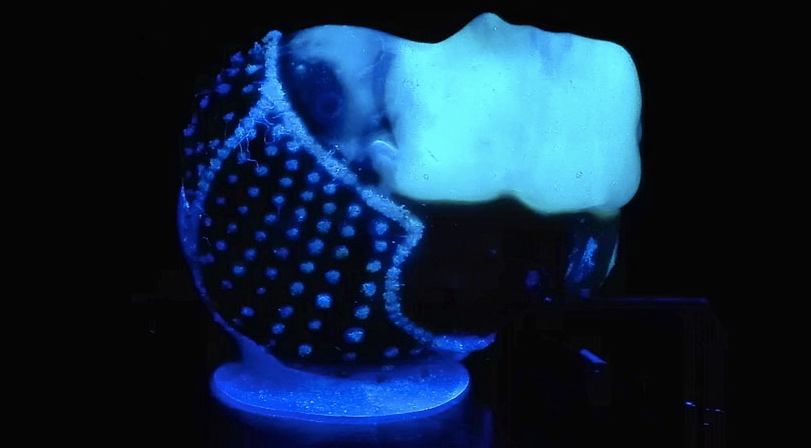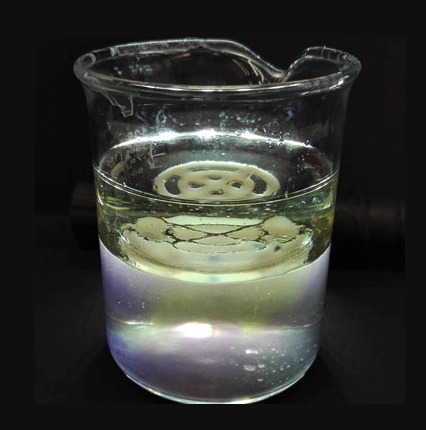
ETH Zurich researchers developed a "living ink" for 3D printers that's made from bacteria, nutrients, and a polymer gel. In a small scale demonstration, they printed a small 3D lattice of the material that cleaned up a beaker of contaminated water. From Science News:
Lattices packing various types of chemical-hungry bacteria could create special water filters or help clean up oil spills. And unlike free-floating bacteria, cells locked in a 3-D grid could be plucked out of cleaned-up water and reused somewhere else....
Bacteria-filled 3-D prints could also produce bacterial cellulose — a gelatinous substance used for dressing wounds. Bacterial cellulose is typically grown in sheets, but "imagine if you have a burn on your elbow," (materials scientist Manuel) Schaffner says. "You try to wrap flat, wet tissue around this area, it's prone to detach." Swathes of cellulose grown on 3-D printed structures could precisely match the contours of specific body parts, curbing the risk of contaminants getting trapped under wrinkles in the cellulose or the material peeling off.



